The Humanist Society is branching out to listing and/or organizing a variety of new activities! On February 25 we will start listing a new free Swing Dance series, hosted by the Goleta Live Oak Unitarian congregation. Courtesy of Unitarian Minister and Humanist Society member Jonathan Young. Jonathan officiated the wedding for Merlie and me! There will be a dance lesson at 6:30PM with Fred Cota and then a free dance from 7:00-8:30PM. See the Meetup link at the end of this article.
Our newest Humanist Society Board member Gary Noreen had an inside connection to organize a tour of Caltech and the Jet Propulsion Laboratory and about 25 of us car pooled down there.
We met at the Athenaeum, a “wisdom” club at Caltech. Here we posed for a group photo:
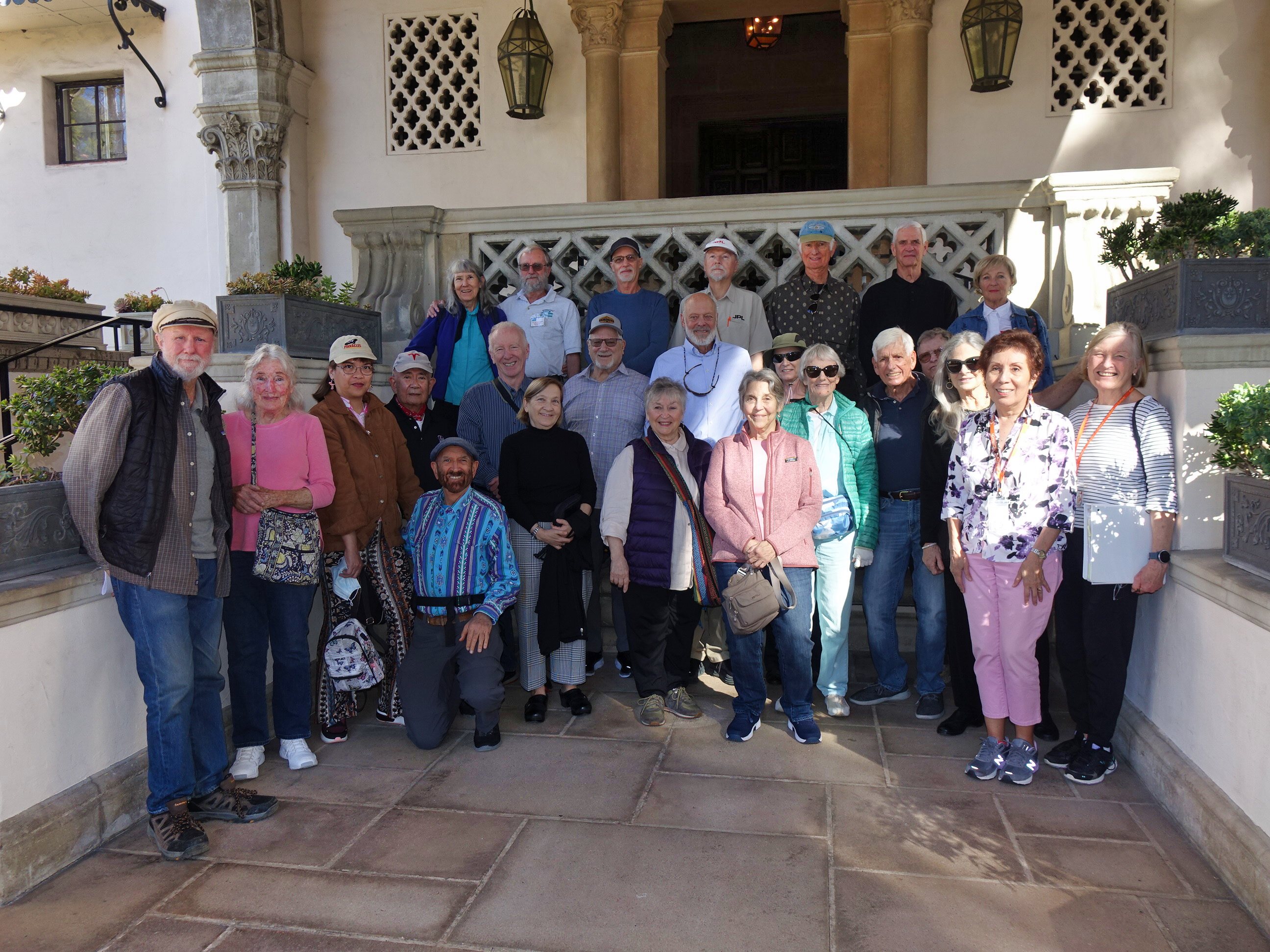
Gary is in the back center with a white cap with “JPL” written in red letters. We posed in this spot because it is also the spot where Einstein posed for this historic group photo:

Einstein used to stay at the Einstein Suite of the Athenaeum when he visited Caltech.
Here are all of my photos from our Caltech tour: https://swt.org/hssb/2024-0129-JPL/1-caltech/
Caltech started as the Throop Institute (pronounced “troop”). It was a co-ed school of manual arts. Famed astronomer George Ellery Hale joined Throop in 1907 and was largely responsible for changing it to a leading school of science and technology. Unfortunately, that also led to it being male only until 1970.
At this point I proudly stepped up as an MIT alumnus and noted that MIT was always co-ed. Ellen Swallow Richards was the first female MIT graduate in 1873.
At this point our guide Gloria explained a bit about the MIT-Caltech rivalry. Here we were standing with the Fleming Cannon, a relic of the Franco-Prussian War, around 1870.

Gloria explained how MIT hackers kidnapped the cannon and brought it across the country to MIT. Here you can read the full story at the MIT virtual museum of hacks: https://hacks.mit.edu/Hacks/by_year/2006/mitcannon/
Caltech almost became a University of California campus, but UCLA was created in 1919 and Caltech got its new name in 1920.
In 1928 the Jet Propulsion Laboratory began on campus with Caltech professor Theodore von Kármán, his grad student Frank Malina and others. But there were some safety concerns after some explosive failures (!) and it was moved to its current location. They chose the Arroyo Seco, a dry canyon wash north of the Rose Bowl in Pasadena.
Dorms were built in 1931. The Fleming Cannon sits in front of Fleming House dormitory. The architectural style is “Mediterranean Eclectic”.

Here you can see some of the adornments representing different sciences and technologies.
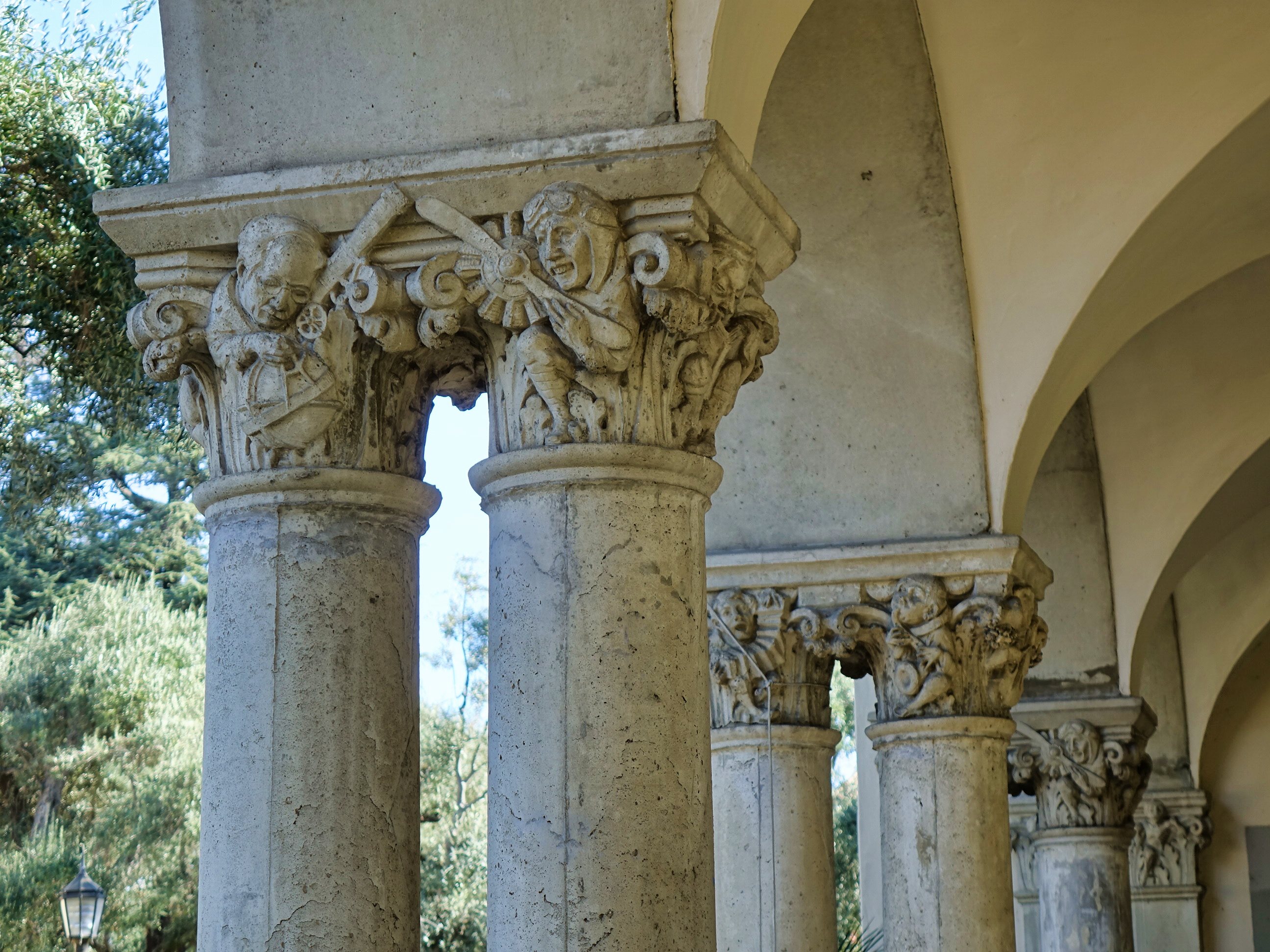
Theodore von Kármán built a wind tunnel in this building of aeronautical research.

The art represents the first around the world flight accomplished by two Douglas aircraft in 1924. Here Theodore von Kármán is honored with a sculpture.

Here we got a peek inside a laboratory in this building.

And here is another laboratory, the Center for Autonomous Systems and Technology

Here we visited a campus pond with lots of red eared slider turtles.
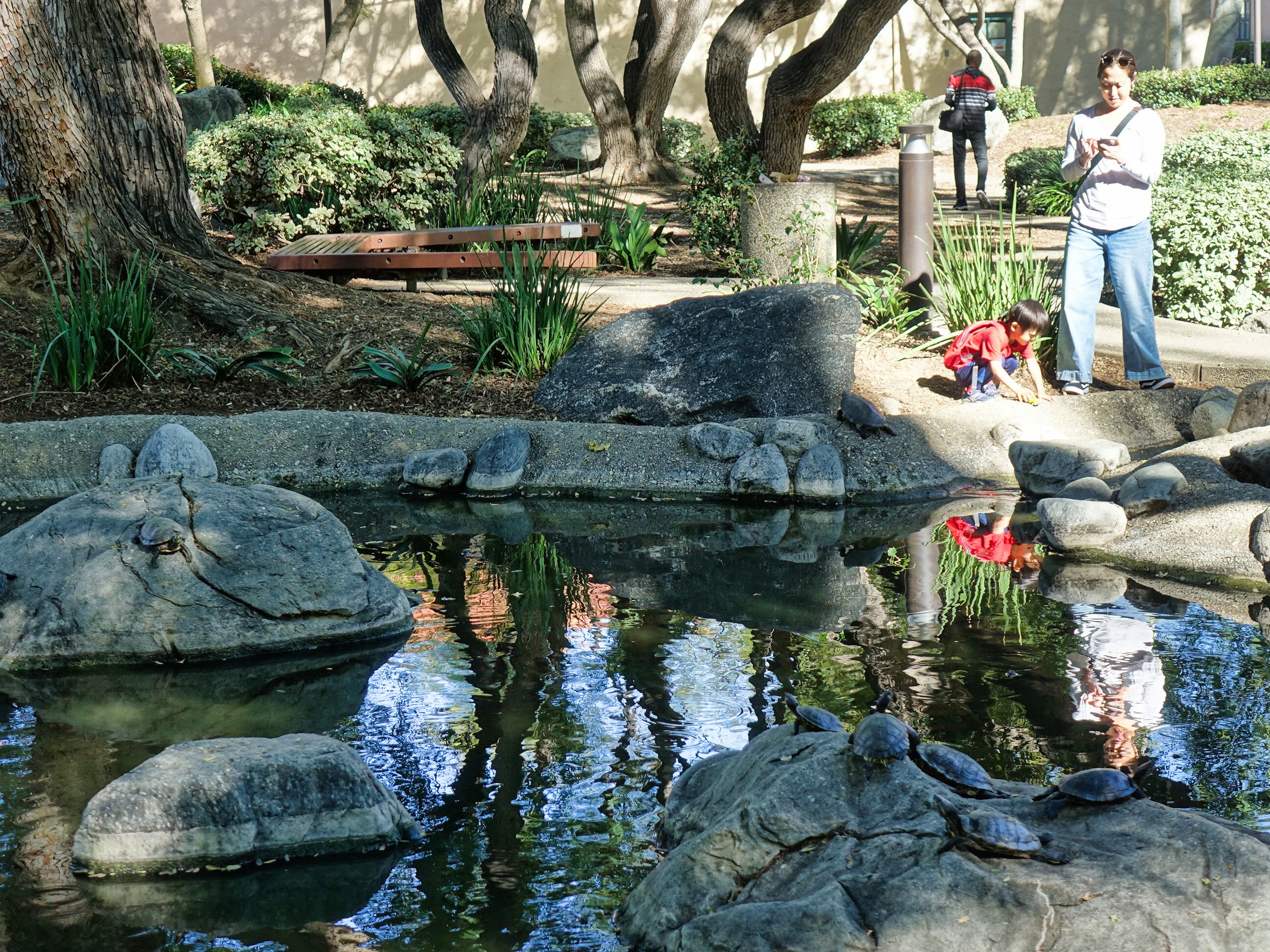
The origin of the turtles in the pool is a bit of a mystery. One rock is fake, which houses the pump and filter machinery.
This tower was supposed to be a library, but it was not a practical design for a library.
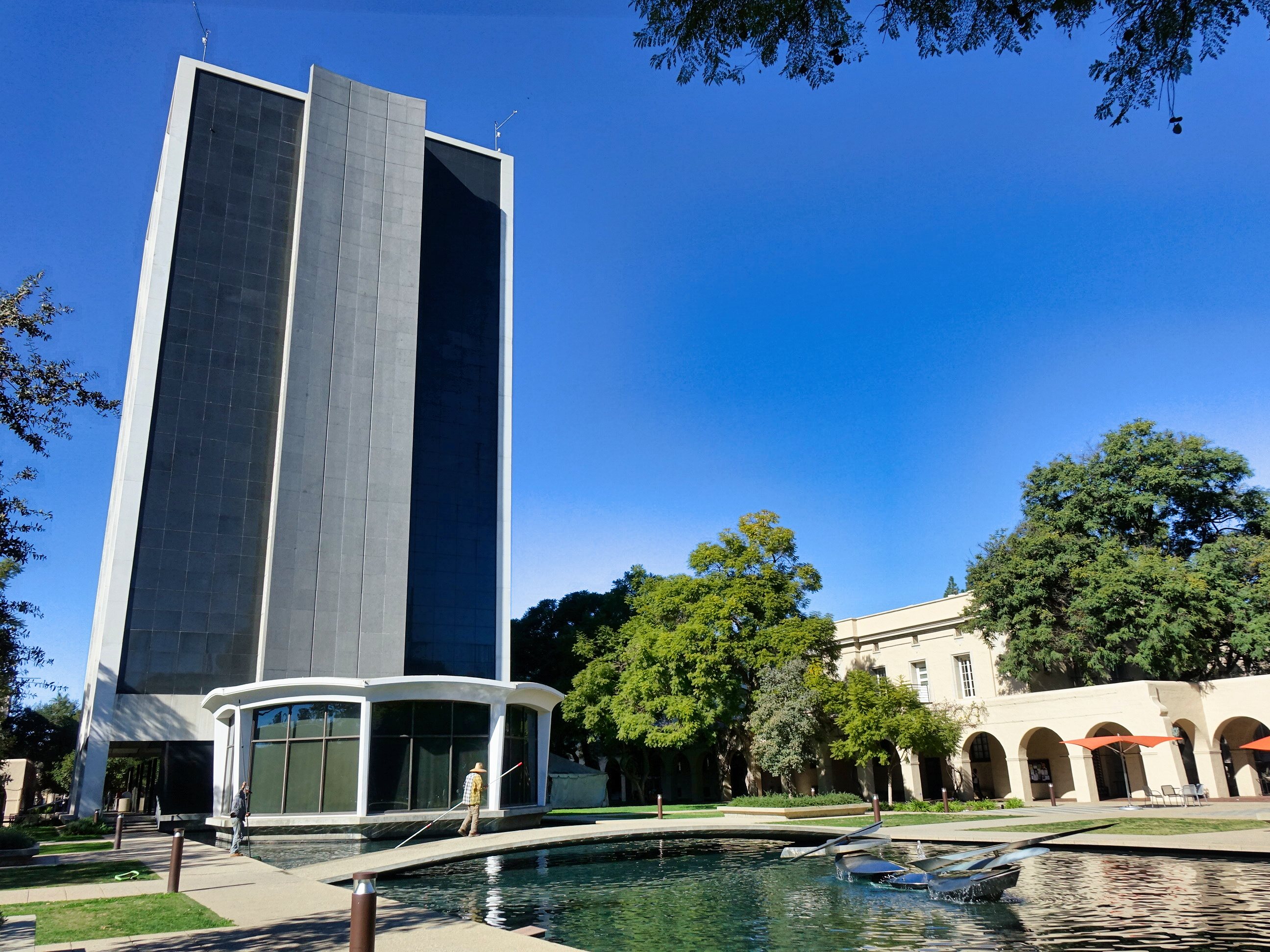
Near the tower is one of the early buildings, housing the Physics Department. Famed physicist Robert Oppenheimer worked here in the 1930s-1940s. Be sure to watch the movie if you haven’t yet seen it!

Here astronomer Hale looks up to Mt Wilson.

Nearby, these Caltech students stroll by, with the Beckman Auditorium and mountains in the background.
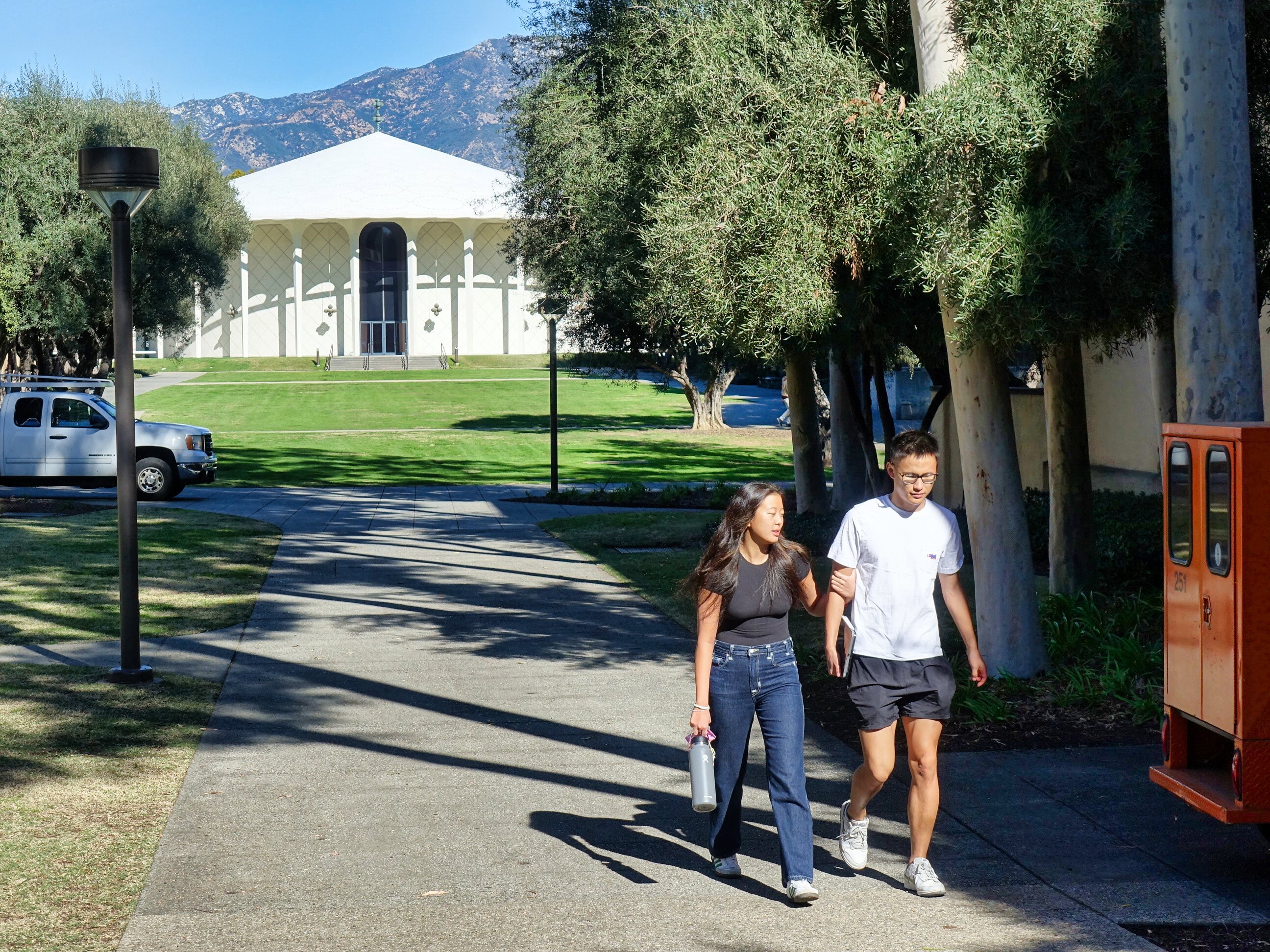
Arnold Beckman invented the pH meter and was a generous donor to Caltech until his death in 2004 at the age of 104!
We then returned to the Athenaeum for a buffet feast!

Then we hurried over to the Jet Propulsion Laboratory (JPL) for that tour. Here are my photos at JPL: https://swt.org/hssb/2024-0129-JPL/2-jpl/
Much of that tour takes place in the Visitor Center where we watched an orientation and history film. Then we viewed replicas of historic space craft and other JPL devices. Here my wife Merlie posed with a Mars rover.
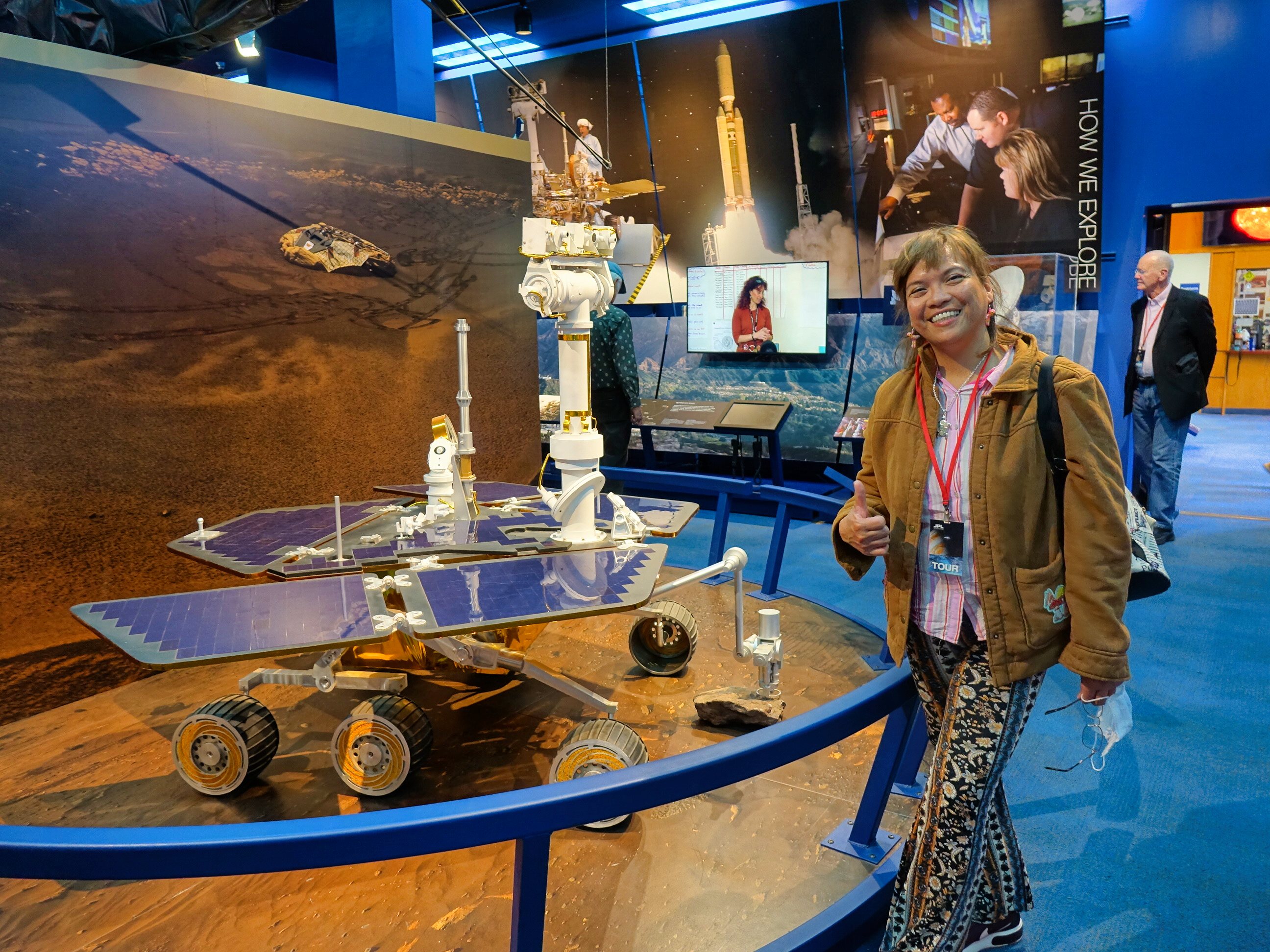
Here I posed with a replica of the Galileo space probe that launched to Jupiter in 1989.

Over my head, I almost missed noticing this full scale replica of the Mars helicopter Ingenuity, which has been a success far beyond expectations.

I almost missed it because I was looking intently at this full scale replica of the Mars rover, Perseverance, which was directly under it!

Perseverance is currently searching for signs of ancient life and collecting samples that eventually will be returned to Earth for study.
Here is a replica of one of the twin Voyager spacecraft. They are now 22 light hours away from Earth. The signal is just one quadrillionth of a watt, yet JPL is still in constant communication with them!

Then we left the Visitor Center and we were able to see some of the real life operations. Most notably, here is the actual Charles Elachi Mission Control Center, where scientists and technicians communicate with all of the far-flung spacecraft and rovers! Including the Voyager spacecraft. Did I mention that signal is just a quadrillionth of a watt?!
We finished up with a special highlight of the tour. We made our way to the assembly clean room where the Europa Clipper was being assembled. Europa is the smallest of the four moons observed by Galileo in 1610. It is a focus of much excitement in recent years because of the possibility that it has elements that might support life. The Europa Clipper is scheduled for launch on October 10 of this year. It is a rush to meet that deadline! It will enter Jupiter orbit on April 11, 2030.
Here is my video of the clean room workers working on the Europa Clipper.
It is not easy to get into these tours, so we were very grateful to Gary Noreen and to the Humanist Society!
Here you can join the Humanist Society Meetup to be notified of a variety of upcoming events! https://www.meetup.com/humanist-society-of-santa-barbara/






Very cool. Local connections …
The Galileo spacecraft was hoisted up to low Earth orbit in the bay of the space shuttle Atlantis. After release from the bay, Galileo was launched into orbit by a rocket called the IUS (Inertial Upper Stage). One of the flight computers in the IUS was designed by engineers at the former Delco Electronics on Hollister Ave (now where FLIR/Teledyne is located):
https://en.wikipedia.org/wiki/Galileo_(spacecraft)
https://en.wikipedia.org/wiki/Inertial_Upper_Stage
And this October when Europa Clipper launches, one of the instruments onboard will be E-THEMIS designed by engineers at Raytheon Vision Systems (across the street from the old Delco). It’s an infrared camera that will be used to search for plumes ejected from Europa that may harbor signs of life under the icy surface of the moon:
https://europa.nasa.gov/spacecraft/instruments/e-themis/
https://en.wikipedia.org/wiki/Europa_Thermal_Emission_Imaging_System
Also on the Galileo spacecraft designed and built at Santa Barbara Research Center were the Radiative Cooler for the Near Infrared Mapping Spectrometer (NIMS) and the Photopolarimeter Radiometer (PPR).
Deep Dive. Great, educational news story. Thank, You,
Thank you for providing the additional information and local connections, EastBeach and Perch.
And thank you for the kind words, Geo Duarte.
Be sure to check out the Humanist Society Meetup page for more outings and interesting events!
https://www.meetup.com/humanist-society-of-santa-barbara/